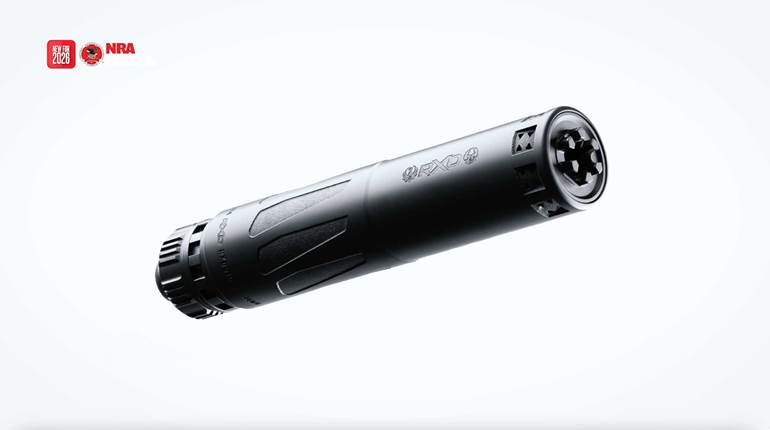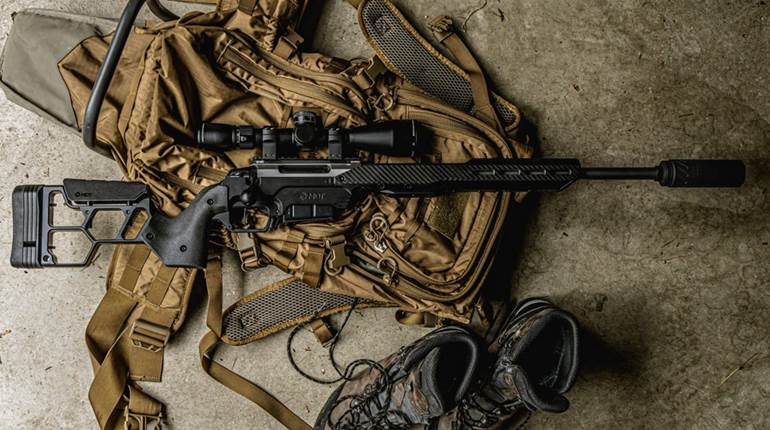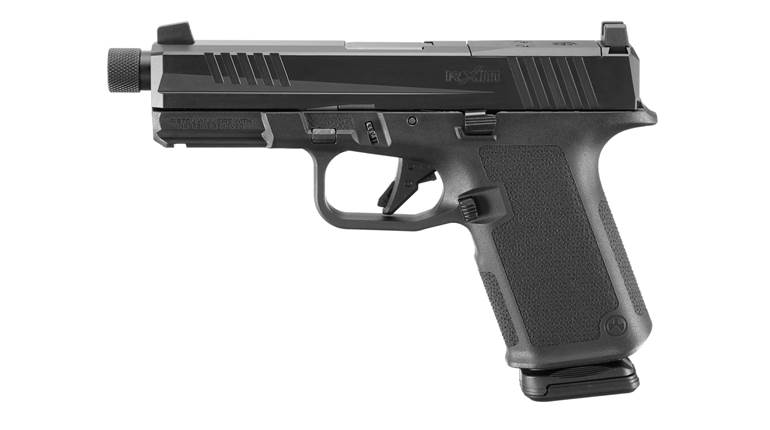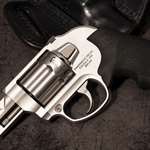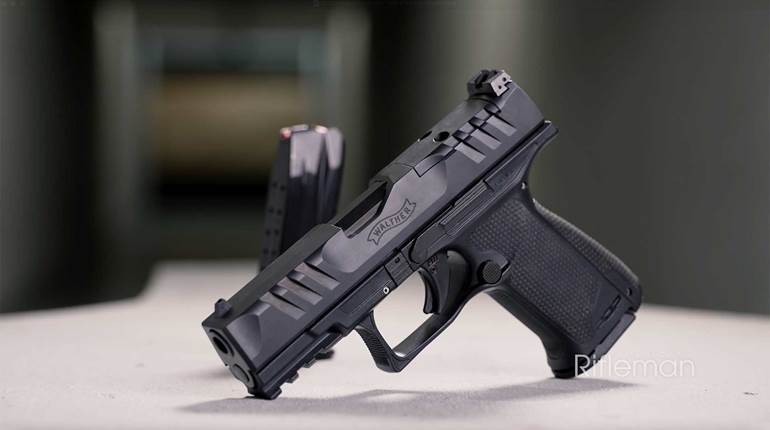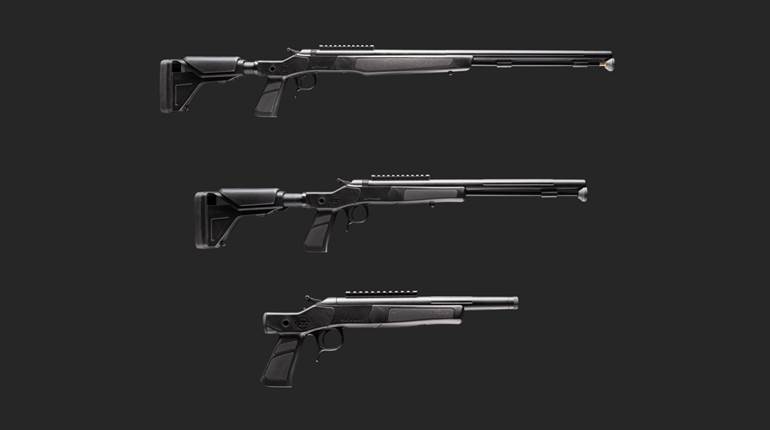
Ruger joined the AR market back in 2009 with the launch of the SR-556 series of semi-autos chambered for 5.56 NATO and .223 Rem. This line was followed by the release of the SR-762 chambered for 7.62 x 51 mm NATO and .308 Win. in 2013. These two-stage, piston-operated rifles have done well, offering a desirable set of features, top-notch accuracy and reliability. However, like other piston driven systems, they are heavier and more expensive than their gas impingement-operated compatriots. The SR-556 has an MSRP of $1,995 and an unloaded weight of almost 8 lbs.
With the high-end and mid-priced AR market covered by its SR series rifles, Ruger decided that now is the right time to add a more budget-friendly gas impingement AR to its catalog. Dubbed the AR-556, this new M4-style carbine is chambered for 5.56 x 45 mm NATO and .223 Rem. It tips the scale at 6 ½ pounds and has a suggested retail of $749.
I met with Mark Gurney, Ruger's director of product management, at the 2014 National Association of Sporting Goods Wholesalers trade show shortly after the AR-556 was announced. We discussed how the company went about reducing the price of this entry-level AR. Keeping the cost of manufactured goods down can be accomplished in several ways. For some companies this includes the use of an overseas workforce, imported components or lower quality materials. Ruger made different choices.
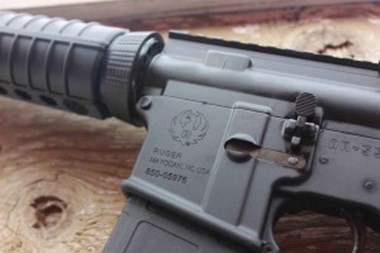
Instead of using tactics that could impact the performance of its ARs, Ruger opted instead to play to its strengths. The company took advantage of its existing U.S. based manufacturing capabilities to make most of the rifle's components in-house instead of outsourcing. In this case, much of the work is completed at the facility in Mayodan, N.C. Ruger developed and executed a leaner, more efficient production process allowing its employees to accomplish more work in less time, which directly affects the bottom line. Finally, the company conducted the market research to determine which features would be in demand and where it could afford to simplify. The result of all this work is an entry-level AR-15 carbine that's definitely ready to give the other budget ARs on the market a run for their money.
See the Ruger AR-556 in action on the range here.
For those who are familiar with the M4 carbine-style AR platforms, the AR-556 doesn't hold much in the way of surprises. However, Ruger did add a few unique touches along the way. At the heart of the rifle, the upper and lower receivers are forged of 7075-T6 aluminum with a matte-black hard-coat anodized finish. The upper receiver is of the flat top variety with an accessory rail in place of a carry handle. A removable, folding polymer rear aperture sight is included.
The 16.10" medium-contour cold-hammer-forged barrel is constructed of 4140 chrome-moly steel and features M4 feed ramp cuts, a 1:8" rifling twist rate that stabilizes bullets from 35 to 77 grains in weight, and a 1/2-28" threaded muzzle with a Ruger flash suppressor installed. Ruger opted to save some money here by not giving the barrel a chrome lining. The milled gas block provides an A-2-style adjustable front sight, a bayonet lug and a quick-detach (QD) sling mount port. The angled face of the front sight is serrated to reduce the glare of bright light.

Ruger recognizes that the hand guard is one of the first AR accessories to be swapped out. And so, this rifle arrives with a simple heat-resistant M4-style glass-filled nylon guard without a heat shield inside. Instead of the typical metallic, spring-loaded delta ring to hold the hand guard in place, the AR-556 has a new polymer delta ring that twists. It was originally developed to eliminate the hassle of wrestling with the delta ring on the construction line but it also makes swapping the hand guard a pain-free process for the owner.
All of the AR-556's controls are of the typical AR configuration and can be found in their usual locations, including the charging handle, safety selector, magazine release and trigger. Although some budget-conscious carbines have been relieved of their forward assists and dust covers, they are both present on the right side of this model. The buffer tube has mil-spec dimensions and is fitted with a basic six-position shoulder stock that has a checkered butt plate and a sling mount.
The trigger guard opening has been enlarged to make room for gloved fingers. The single-stage, mil-spec trigger is typical of the breed, but better than some, with this one exhibiting a fairly smooth trigger pull of 6 lbs., 13 ozs. The slim polymer pistol grip is lightly textured along the sides with serrations and grooves along the front and back straps.
Opening the rifle reveals a bolt carrier group with a matte-black oxide finish. The gas key has been staked to keep it tightly in place. The interior of the gas key opening, where the key comes into contact with the gas tube, is lined with some of the chrome that was left out of the barrel in order to increase its durability. The interior of the bolt carrier, meaning the channel in which the bolt rests, is also chromed. The rifle arrives with one 30-round Magpul PMAG.
At the range, the AR-556 acquitted itself nicely both on and off the shooting bench. Recently I've been handling some of the bulkier .308 Win. semi-automatics, so it was fun to get back to the light weight, almost peppy handling of an M4-style carbine like this one. Overall, the fit and finish of the rifle was very good. There was nothing about it that either looked or felt 'cheap.' The pistol grip was slim and comfortably contoured and all of the controls functioned properly.
The rifle was put through its paces with a variety of ammunition and magazines. The gun successfully digested .223 Rem. and 5.56 x 45 mm NATO loads ranging from full-metal jack steel-cased imports to defense-grade brass-cased hollow points. Test magazines included 20- and 30-round units from Magpul, Brownells, C Products Defense and HEXMAG. Despite all of the mixing and matching, the rifle ran reliably without any malfunctions throughout the entire test.
Formal 100-yard accuracy testing was conducted by firing five-shot groups from a bench rest using a Leupold VX-R Patrol 3-9X 40 mm Firedot TMR scope held in place with a Mark 2 IMS integral mounting system. Winchester 5.56 NATO 55-gr. full-metal jacket loads turned in the best single group of 1.34" as well as the best average of 1.53". Hornady Superformance .223 Rem. 55-grain GMX ballistic tips yielded a best group of 1.36" with an average of 1.56". The brand new HPR Black Ops .223 Rem. 62-gr. open-tip frangible (OTF) load turned in a best single group of 1.52" with an average of 1.62".
Ruger is a company that was founded on the idea of providing the average Joe with quality firearms at fair prices. The new AR-556 gas-impingement AR-15 rifle is a good example of how the company is continuing to meet that commitment. For those who are thinking of building an AR to save money, the AR-556 has a real-world price of around $600, which is right in line with a set of basic do-it-yourself components.
This American rifle is a well-made, reliable entry-level AR package that doesn't skimp on the features buyers are looking for and it arrives from the factory ready to shoot. It's an ideal option for the first-time AR buyer, the casual shooter who doesn't want to sink a fortune into a rifle or for those who want a solid AR platform they can customize.
Ruger AR-556 Manufacturer: Sturm, Ruger & Co., Inc.
Model: AR-556 (8500)
Action: Gas Impingement semi-automatic rifle
Caliber: 5.56 x 45 mm NATO/ .223 Rem.
Upper Receiver: Flat Top 7075-T6 aluminum fForging, type III hard-coat anodized
Lower Receiver: 7075-T6 aluminum forging, Type III hard-coat anodized
Trigger: single-stage
Front Sight: A-2 Style elevation adjustable, F-height
Rear Sight: folding polymer aperture
Hand Guard: M4-Style
Pistol Grip: black polymer
Buffer Tube: Mil-Spec
Shoulder Stock: 6-position adjustable
Barrel Length: 16.10"
Overall Length: 32.25" - 35.50"
Length of Pull (LOP): 10.25" - 13.50"
Weight: 6.50 lbs.
Capacity: 30 lbs.
Twist: 1:16: RH
Rifle Grooves: 6
Accessories: one 30-round Magpul PMAG, front sight tool, owner's manual, lock
MSRP: $749













